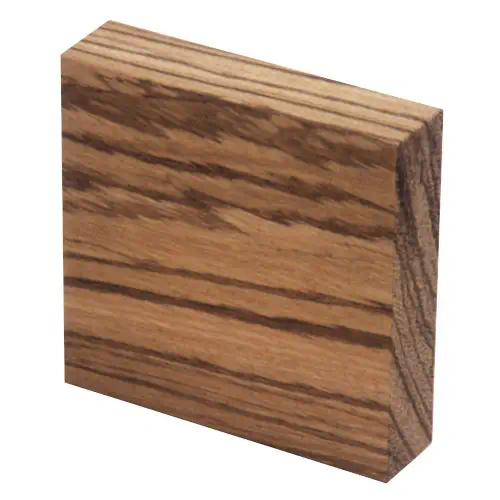Exotic Woods
Balsa – Central & South America
Specific Gravity: 0.16
Hardness: Very Soft
Strength: Very Weak
Bendability: Low
Tangential Stability: 7.6%
Radial Stability: 3.0%
Hand Tools: Very Easy
Power Tools: Very Easy
Gluing: Excellent
Finishing: Poor
Common Uses: Modelmaking, aircraft, boats, wind turbine blades, packaging, insulation, soundproofing, reduction of vibration, composites, floats, lifebelts, buoys, boxes, toys.
Comments: The softest and lightest hardwood available commercially and the fastest growing. Balsa matures and is ready for harvest in about ten years.
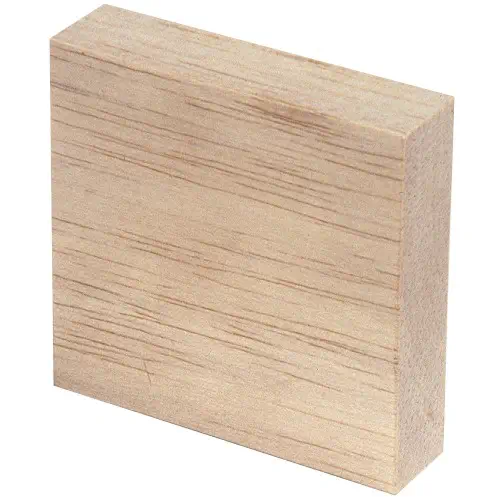
Bocote – Central & South America
Specific Gravity: 0.55
Hardness: Medium
Strength: Medium
Bendability: Medium
Tangential Stability: 8.0%
Radial Stability: 4.0%
Hand Tools: Easy
Power Tools: Easy
Gluing: Adequate
Finishing: Excellent
Common Uses: Furniture, cabinets, inlay, boat decking, tool handles, veneer.
Comments: Many tool manufacturers substitute this for rosewood in top-of-the-line hand tools. Wood is oily, resin builds up on cutters. Also clogs abrasives. Includes several species of the Cordia family, some endangered.
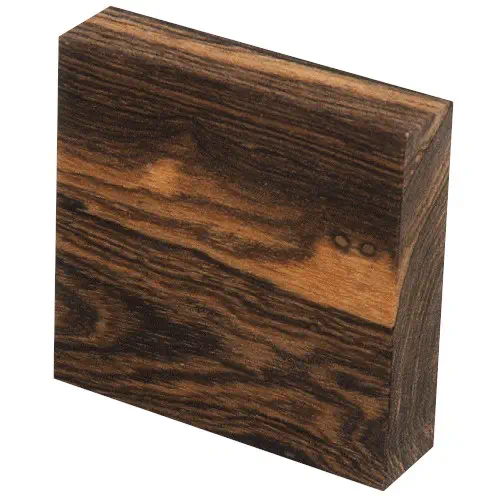
Bubinga – West Africa
Specific Gravity: 0.71
Hardness: Very Hard
Strength: Very Strong
Bendability: Low
Tangential Stability: 8.4%
Radial Stability: 5.8%
Hand Tools: Easy
Power Tools: Moderate
Gluing: Poor
Finishing: Poor
Common Uses: Furniture, turnings, eating utensils, knife handles, musical instruments, drums, archery bows, veneer.
Comments: Gum pockets in the wood make gluing difficult, may also cause pitch to build up on cutters. Endangered.
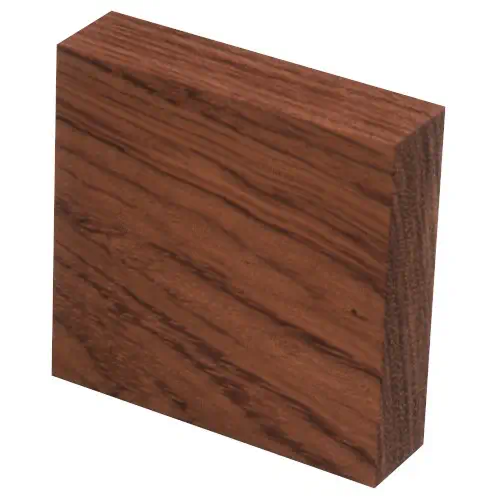
Cocobolo – Central America
Specific Gravity: 1.10
Hardness: Very Hard
Strength: Very Strong
Bendability: Very Low
Tangential Stability: 9.3%
Radial Stability: 6.7%
Hand Tools: Difficult
Power Tools: Moderate
Gluing: Poor
Finishing: Good
Common Uses: Tool handles, knife handles, gun grips, billiard cues, turnings, wooden jewelry, inlays, veneer.
Comments: Dulls cutting edges. Very oily, resin builds up on blades and cutters. Oils may react with some oil-based lacquer finishes. Resistant to decay. Potential irritant. Endangered.
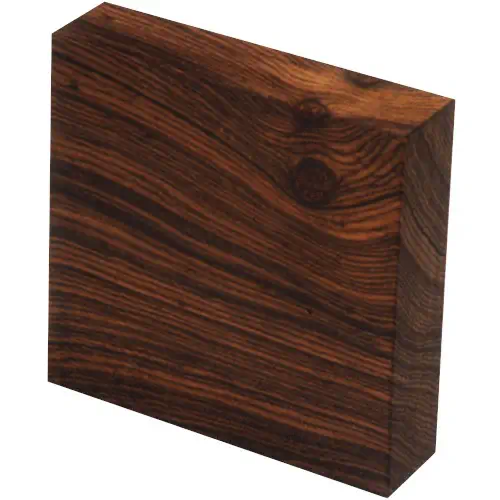
Ebony, Gaboon – Central Africa
Specific Gravity: 1.03
Hardness: Very Hard
Strength: Very Strong
Bendability: High
Tangential Stability: 6.5%
Radial Stability: 5.5%
Hand Tools: Difficult
Power Tools: Difficult
Gluing: Good
Finishing: Excellent
Common Uses: Tool and knife handles, piano and organ keys, musical instrument tuning pegs and fingerboards, turnings, knobs, pool cues, inlay.
Comments: Color varies from dark gray to jet black; darkest wood known. Dulls cutting edges and chips easily. Potential irritant and sensitizer. Supplies severely depleted. Endangered.
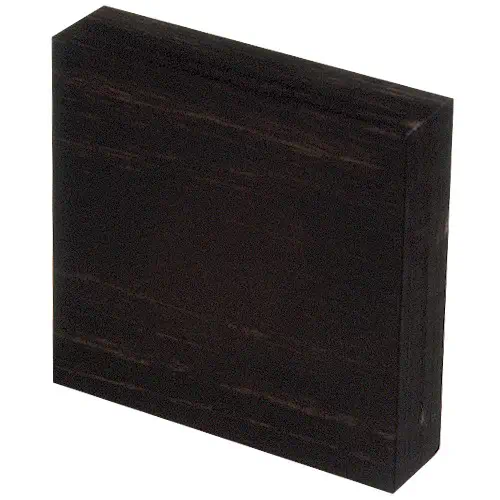
Goncolo Alves – South America
Specific Gravity: 0.84
Hardness: Very Hard
Strength: Very Strong
Bendability: Very Low
Tangential Stability: 7.0%
Radial Stability: 4.0%
Hand Tools: Difficult
Power Tools: Difficult
Gluing: Good
Finishing: Excellent
Common Uses: Furniture, cabinets, boats, turnings, archery bows, knife handles, veneer.
Comments: Sometimes called "Tigerwood." Interlocking and irregular grain makes wood difficult to work; tools must be sharpened often. Chips and tears out easily. Potential irritant. Endangered.
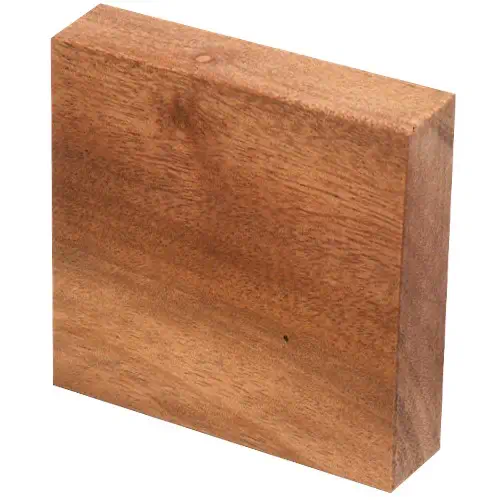
Jelutong – Indonesia, Malaysia
Specific Gravity: 0.36
Hardness: Very Soft
Strength: Very Weak
Bendability: Very Low
Tangential Stability: 4.0%
Radial Stability: 2.0%
Hand Tools: Very Easy
Power Tools: Very Easy
Gluing: Excellent
Finishing: Excellent
Common Uses: Carving, handicrafts, matches, lightweight trim, plywood.
Comments: Favorite of carvers, similar to but more stable than basswood. Live tree is tapped to drain latex resin which is used to make chewing gum. Harvested tree may have pockets of resin.
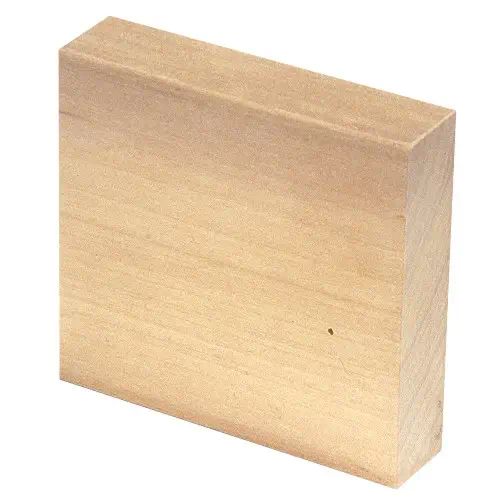
Lacewood – Europe, Australia
Specific Gravity: 0.62
Hardness: Medium
Strength: Medium
Bendability: High
Tangential Stability: N/A
Radial Stability: N/A
Hand Tools: Easy
Power Tools: Moderate
Gluing: Excellent
Finishing: Excellent
Common Uses: Furniture, inlay, turnings, boxes, flooring, veneer.
Comments: Related to Sycamore, quartersawn lumber shows unique ray fleck. Plainsawn wood and tree called "Plane." Grows to huge proportions, used by ancient Persian and Greeks to provide shade in gardens and parks. Hippocrates taught medicine under a plane tree. Potential irritant.
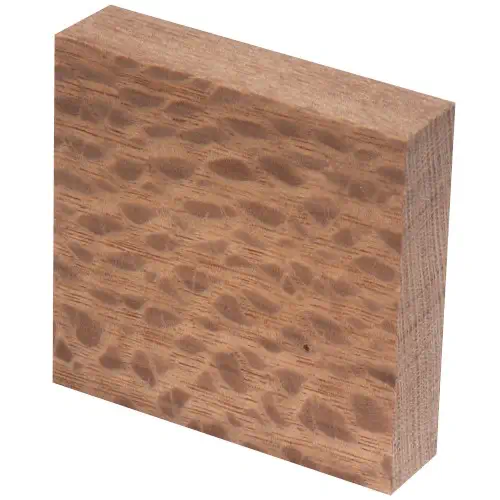
Mahogany, African – West Africa
Specific Gravity: 0.42
Hardness: Soft
Strength: Medium
Bendability: Low
Tangential Stability: 4.5%
Radial Stability: 2.5%
Hand Tools: Moderate
Power Tools: Easy
Gluing: Good
Finishing: Excellent
Common Uses: Furniture, cabinets, boats, interior trim, plywood, veneer.
Comments: Quartersawn grain shows ribbon figure (due to interlocked grain). Similar properties and appearance as Honduras mahogany. Not yet endangered, but stressed due to loss of habitat.
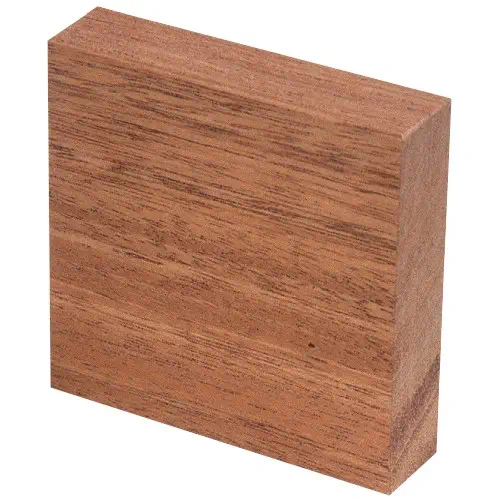
Mahogany, Honduran – Central America
Specific Gravity: 0.45
Hardness: Soft
Strength: Medium
Bendability: High
Tangential Stability: 4.1%
Radial Stability: 3.0%
Hand Tools: Very Easy
Power Tools: Very Easy
Gluing: Excellent
Finishing: Excellent
Common Uses: Furniture, outdoor furniture, cabinets, boats, caskets, pianos, carving, aircraft propellers, veneer.
Comments: Most cherished furniture wood in the world, preferred for classic styles. Produces a wide variety of figured grain including fiddleback, blister, ribbon, curly, and mottled. Resists decay. Endangered.
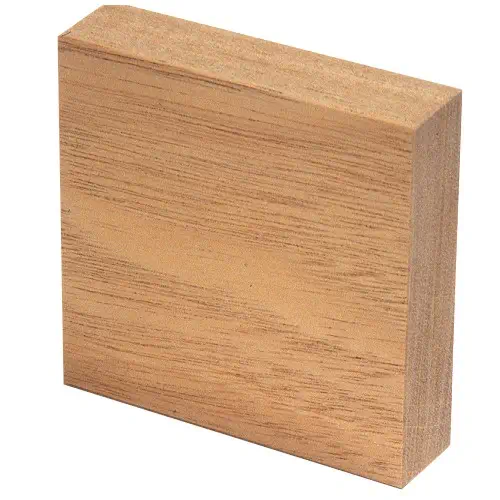
Mahogany, Philippine (Luaun) – Indonesia, Malaysia
Specific Gravity: 0.54
Hardness: Soft
Strength: Strong
Bendability: High
Tangential Stability: 8.0%
Radial Stability: 3.8%
Hand Tools: Very Easy
Power Tools: Very Easy
Gluing: Excellent
Finishing: Good
Common Uses: Furniture, cabinets, boats, trim, boxes, plywood, paneling.
Comments: Waterproof, resists decay. Premium boatbuilding wood, excellent utility wood in furniture. Not a true mahogany; US Federal Trade Commission has ruled it cannot be marketed as such but misnomer persists.
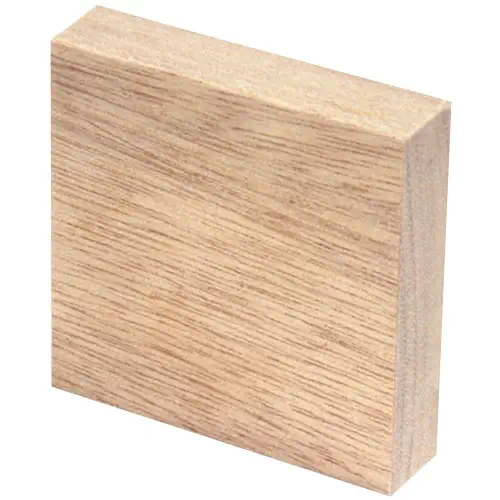
Padauk – Western Africa, Indonesia
Specific Gravity: 0.727
Hardness: Medium
Strength: Strong
Bendability: Very High
Tangential Stability: N/A
Radial Stability: N/A
Hand Tools: Easy
Power Tools: Very Easy
Gluing: Good
Finishing: Excellent
Common Uses: Furniture, cabinets, tool and knife handles, carvings, turnings, wheels, flooring, billiard tables, trim, veneer.
Comments: Valued for its durability and high resistance to abrasion. Extracted oils used as dye. Photoreactive – color darkens in sunlight. Very stable, resists decay. Potential irritant. Endangered.
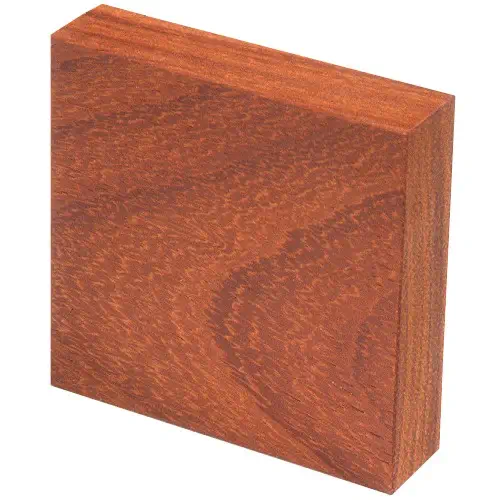
Purpleheart – Central & South America
Specific Gravity: 0.67
Hardness: Hard
Strength: Very Strong
Bendability: Medium
Tangential Stability: 6.1%
Radial Stability: 3.2%
Hand Tools: Moderate
Power Tools: Difficult
Gluing: Good
Finishing: Good
Common Uses: Furniture, turning, inlay, boats, tool handles, billiard tables, flooring, construction.
Comments: Photoreactive, color changes to deep brown in sunlight. Wood is oily; resin builds on cutters. Resists decay. Alcohol-based finishes such as shellac dissolve purple color. Endangered.
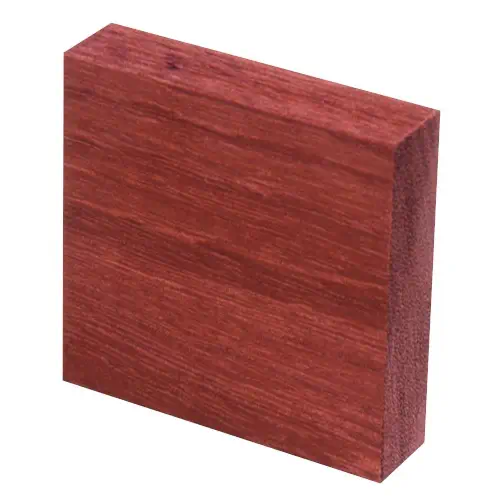
Rosewood, Bolivian – South America
Specific Gravity: 0.80
Hardness: Very Hard
Strength: Very Strong
Bendability: High
Tangential Stability: 6.6%
Radial Stability: 2.6%
Hand Tools: Difficult
Power Tools: Difficult
Gluing: Poor
Finishing: Poor
Common Uses: Furniture, cabinets, pianos, inlay, musical instrument pegs and fretboards, knife handles.
Comments: Also called "Morado" and "Pau Ferro." Not a true rosewood, but used as a substitute for Brazilian rosewood which is depleted. Resists decay. Potential sensitizer, skin irritation is common.
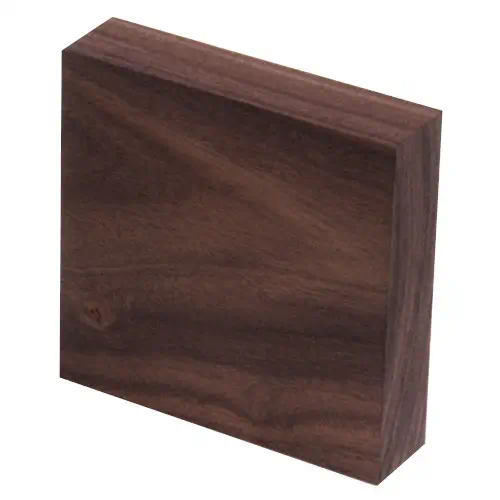
Rosewood, Honduran – Central America
Specific Gravity: 0.96
Hardness: Very Hard
Strength: Strong
Bendability: Low
Tangential Stability: N/A
Radial Stability: N/A
Hand Tools: Difficult
Power Tools: Difficult
Gluing: Poor
Finishing: Poor
Common Uses: Pianos, musical instruments, billiard tables, turnings, moldings, picture frames, veneer.
Comments: Grows in an extremely small geographical area in a habitat stressed by poor forestry practices, which restricts supplies. Resists decay. Potential sensitizer. Endangered.
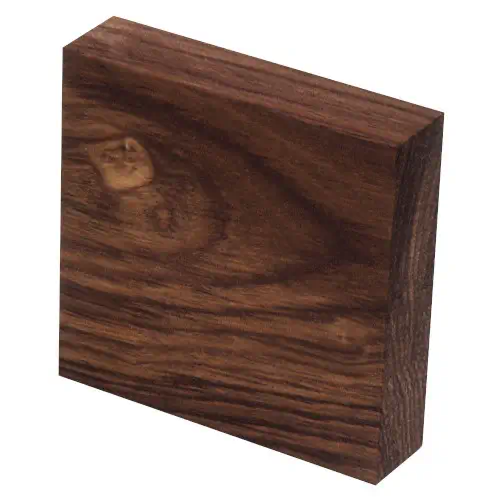
Rosewood, Indian – Southeast Asia
Specific Gravity: 0.75
Hardness: Very Hard
Strength: Very Strong
Bendability: High
Tangential Stability: 5.8%
Radial Stability: 2.7%
Hand Tools: Difficult
Power Tools: Difficult
Gluing: Adequate
Finishing: Good
Common Uses: Furniture, cabinets, musical instruments, trim, flooring, turnings, boats, veneer.
Comments: Remarkably stable, has a distinct fragrance. Good "tonewood" and is used in musical instruments for soundbox parts. Resists decay, potential sensitizer. Not endangered, but supplies depleted from overuse.
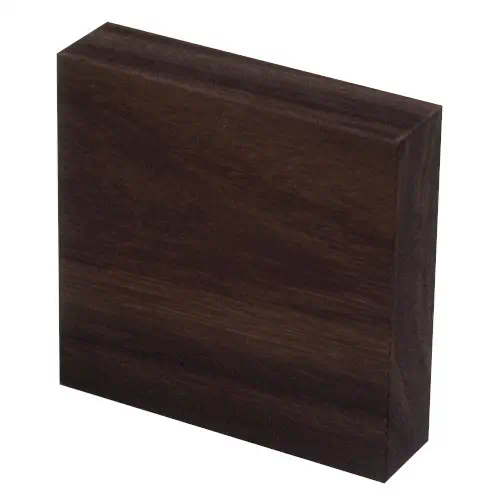
Teak – Southeast Asia, Indonesia
Specific Gravity: 0.55
Hardness: Medium
Strength: Strong
Bendability: Medium
Tangential Stability: 5.8%
Radial Stability: 2.5%
Hand Tools: Moderate
Power Tools: Moderate
Gluing: Good
Finishing: Good
Common Uses: Outdoor and formal furniture, cabinets, boats, vats, laboratory fittings, flooring, veneer.
Comments: Very stable, resists decay. Resistance to chemicals make it good for laboratory benches and woodenware. Oily to touch. One species, Dahat Teak, is endangered.
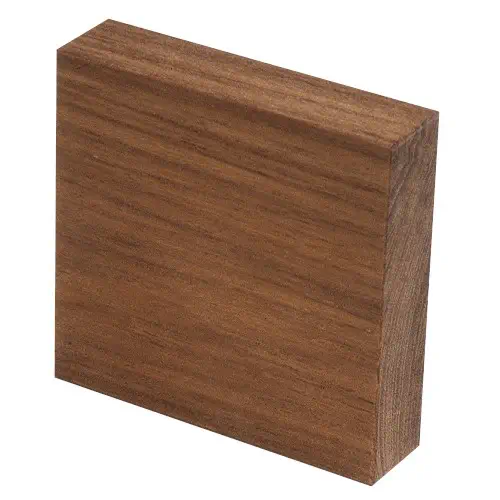
Tulipwood – South America
Specific Gravity: 0.96
Hardness: Very Hard
Strength: Very Strong
Bendability: Very Low
Tangential Stability: N/A
Radial Stability: N/A
Hand Tools: Difficult
Power Tools: Difficult
Gluing: Good
Finishing: Excellent
Common Uses: Cabinets, caskets, turnings, inlay, decorative items.
Comments: Member of rosewood family; wood is oily and fragrant. Not to be confused with wood from the Tulip Poplar. Wood is stable, but brittle. Tree is small so long boards are not available. Extremely hard, blunts cutters. Potential sensitizer.
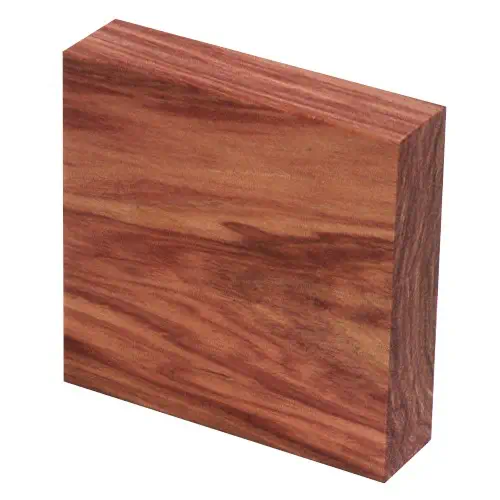
Wenge – Central Africa
Specific Gravity: 0.88
Hardness: Very Hard
Strength: Strong
Bendability: Low
Tangential Stability: 6.0%
Radial Stability: 3.0%
Hand Tools: Moderate
Power Tools: Easy
Gluing: Poor
Finishing: Good
Common Uses: Carving, archery bows, inlay, turning, flooring, trim, hand tool bodies and handles, veneer, construction.
Comments: Stable, resists decay and abrasion. Resin makes it difficult to glue satisfactorily, and dust loads up in abrasives. Sometimes substituted for ebony. Not yet endangered, but severely stressed due to habitat destruction.
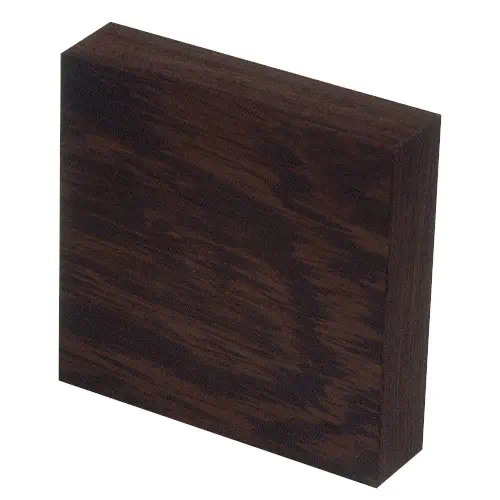
Zebrawood – West Africa
Specific Gravity: 0.74
Hardness: Hard
Strength: Strong
Bendability: Medium
Tangential Stability: 12.0%
Radial Stability: 7.0%
Hand Tools: Easy
Power Tools: Difficult
Gluing: Good
Finishing: Excellent
Common Uses: Small furniture, turnings, inlay, veneer, decorative trim.
Comments: Stable but not durable. Interlocking grain makes it difficult to plane and joint. Quartersawn lumber best shows "zebra" stripes – almost all lumber cut for export is quartersawn.
